If you sell products, you know that your profit is more than just the money that comes in. You have to subtract the amount that it cost YOU to have that product from the amount the customer pays you.
How does this work from an “accounting” standpoint?
Here’s a quick scenario for you:
Let’s say that you run a children’s boutique. You buy onesies for $4 each. You sell them for $10 each.
In your starting month, let’s say January 1st, you have 11 onesies. This means that as of January 1st, you have $44 dollars worth of inventory. (Inventory is recorded on the Balance Sheet, along with the balances in your checking accounts, loans, credit cards, etc. It just reflects the “balance” of things.)
Also, in the month of January, you sell 5 onesies.
As of January 31st, your Profit and Loss report will look something like this:
Revenue: $50 (5 onesies at $10 each)
Cost of Goods Sold: $20 (5 onesies at $4 each)
Gross Income*: $30
Also, as of January 31st, your Balance Sheet will look something like this:
Inventory: $24 (6 onesies left at $4 each)
So you can see that when you sold 5 onesies, the COST of those 5 onesies moved from Inventory to Cost of Goods Sold.
Need someone to help you figure out your true value of Inventory and Cost of Goods Sold for the year?
Get a FREE Review of Your Books!
*This is only your Gross Income because there is another section of the Profit and Loss not mentioned here, the Expenses section. After you figure your Gross Income, you subtract business expenses (such as rent, employees, etc.) to get your Net Income.

